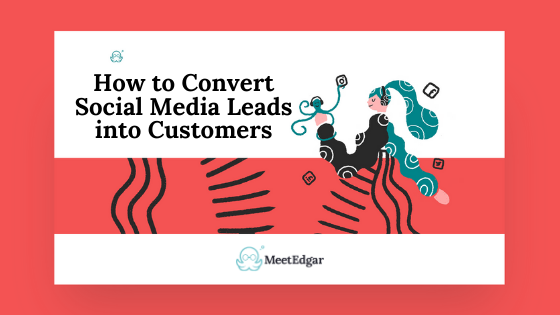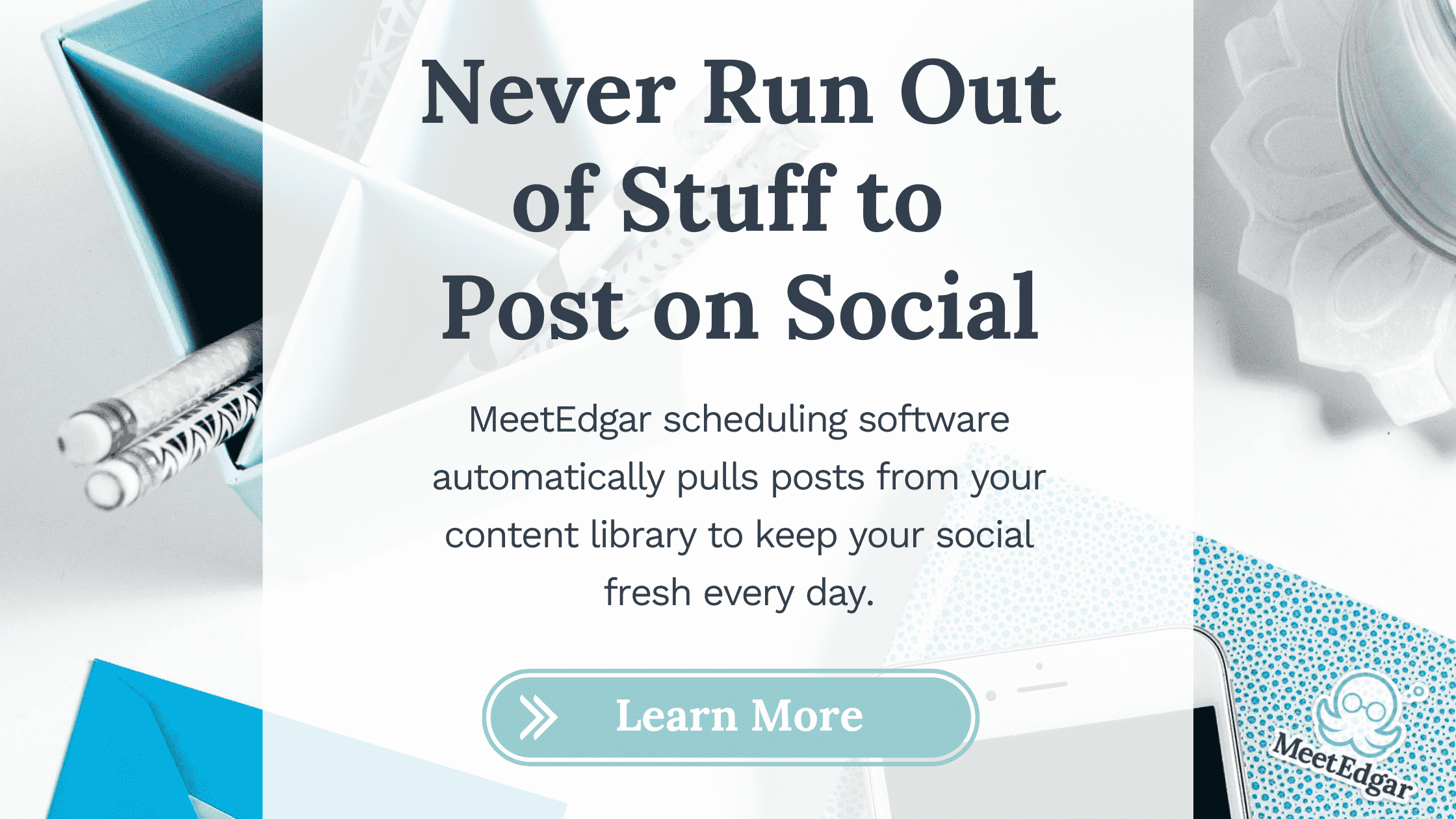Since pretty much the time Facebook started allowing businesses to create pages, entrepreneurs and small business owners have wondered how to turn followers into customers.
It’s been about 13 years since Facebook first launched business pages and we have definitively answered the question that yes, social media can help businesses reach new customers.
For one thing, social media has become a normal part of our daily lives. Did you know that 57.6% of the world’s population use social media and 4 in 10 internet users use social media when researching things to buy?
So if you know most people are on social media and many of them are using social media to research purchases, then the million-dollar question is: how to convert social media users and make more sales?
What is social conversion?
Social conversion is the number of new customers you acquire through your social media channels. Whether it’s through social media advertising campaigns or other social strategies, it all counts as a social conversion. Your social media conversion rate is the number of people who see your posts and then make a purchase from your business.
How to turn followers into customers
The good news is that learning to sell on social is a tactic that any business — no matter their size (or the size of their budget) — can successfully use to grow. But you can’t do it right away. Social selling is just as much an art form as it is a marketing tool, so let’s get to learning how to convert social media leads into customers.
Try these tactics and watch the increase in your social media conversion rate.
1. Build your KLT
No one likes a sleazy salesman (Sorry, salesmen, we know not all of you are sleazy but you know the saying.) If you really want to convert social media leads into customers, the first thing you have to do is to build your KLT factor.
KLT stands for know, like and trust and it is the foundation of any good social media strategy. KLT actually predates social media. If you want anyone to buy from you whether it’s IRL or online, you need to establish Know, Like and Trust with them.
The order of Know, Like and Trust is important.
- Customers need to trust you to buy from you.
- But they can’t trust you until they like you.
- And they can’t like you until they get to know you.
So for someone to go from a stranger on social media to a loyal fan, they need to:
- Get to know you
- Start to like you
- Build trust with you
(Want some tips on how you can improve your KLT? We dive deep into what creates Know, Like & Trust in this post.)
The point is – you can’t just show up on Instagram and start expecting people to purchase the second you post a photo. Luckily, it’s super easy to establish all 3 factors of KLT on social media.
2. Post a healthy mix of social media content
A feed with nothing but promotional posts is boring. But on the flip side, if all you do is post funny memes, your audience might completely forget what you and your product or service can do for them.
You need to share a mix of social media content to keep your social media feed engaging and to give a complete view of you and your brand. Different content can do different things for your brand.
Here are some ideas:
Knowing content:
Share your story, your background, and why you started your business so your audience can get to know you. You can also use knowing content to increase engagement. For example, ask questions and share your own answers (and respond when your community shares theirs as well).
Liking content:
Share behind-the-scenes stories of your world, including messy kitchens, barking dogs, and cranky kids! We all want to connect on social media and liking content is all about building that connection. So share your personality and sense of humor through your content.
Trusting content:
Establishing a sense of trust is all about showing your audience that you really can help them achieve whatever your product or service helps them do. Share testimonials, reviews and user-generated content from your existing customers. If you are brand new in business and don’t have any customers, you can share how you’ve helped solve your own problem or provide useful tips, ideas, and tools that your audience can use and learn from.
Creating all of these different types of content is super easy if you split everything up into categories. Establish your different categories and make sure you have at least one for every factor. (If you want more info on creating categories, check out this post. It’s a deep dive into how to create the perfect mix of social media content for your audience.)
3. Engage with your audience
Would you buy from someone who completely ignores you?? Probably not. Social media requires you to be social!! If you want someone to turn into a customer, you’ll need to spend some time engaging with them.
Respond to social media comments, follow people who follow you, start conversations and engage with their content.
4. Consistenty is key
If your goal is social media conversions, then you have to be consistent! Your followers will never trust you enough to buy if you aren’t consistently posting on social media and engaging with your audience.
Does this take some time? Absolutely! That’s why we always encourage you to start building your social media presence during your pre-launch phase. It’s never too early to start building your brand!
Oh, and you can use a scheduling tool like Edgar to make all of this easier and less time-consuming.
You might be thinking, “What does this have to do with learning to convert social media leads into followers?” And the answer is everything.
You have to build a strong social foundation and you need to build up enough trust with someone before they take the next step with you.
Once you’ve done that, it’s time to think about off-ramps. As in, what will get your followers off the social media highway and onto your home turf?
Sales from social media rarely happen on social media. Your audience needs to trust you enough that they’ll follow you off social media onto your website, a landing page, or your email list so they can make a purchase.
5. Create strong CTAs
A CTA is a “call to action” and you should factor into almost every piece of content. One of our favorite rules is “Give every piece of content a job to do.”
In other words, you should know what action you want your audience to take after engaging with a piece of content. This could be following your Instagram page, responding to your Tweet, commenting on a blog post, reviewing a podcast, subscribing to your email list or making a purchase.
The CTA is the part of the content where you ask your audience to take that action. Ya know, you call them into action. 😉
CTAs are everywhere, from your social posts to your sales pages and you need to make sure they are really effective and entice your audience to click. Don’t just say “Buy now” or “Click here.” Punch up that copy a little bit with some of these best CTA practices:
- Use actionable language like “discover” and “learn.”
- Make the benefit of the CTA very clear. How will your audience benefit from your content or products and services?
- Show proof of value. For example “Join 5,000 other entrepreneurs and subscribe!” You’re building in value by showing that others have already subscribed
- Get personal with your CTA, such as “Sign me up!”
Test your different CTAs to see what gets your audience clicking! (Edgar’s variation tool is perfect for testing different CTAs in your social posts. Then you can use the best-performing one on your landing pages! (Check out how Edgar’s variations tool works here.)
6. Your landing page is important
Your CTA needs to send your audience somewhere to either purchase, download, sign up or subscribe. This page where the audience lands after taking action is known as a landing page.
This is different than just sending your audience to your website or your blog page because the landing page is designed to get your audience to convert and take the next step. If you just send someone to your homepage, they could end up reading your about page and clicking around trying to find where to purchase before exiting.
If you follow the rule that every piece of content has a job, then your landing page’s job should be to get your audience to take that next step that gets them closer to purchase. Landing pages are especially important if you only have space for one link (we’re looking at you, Instagram!).
There are tons of studies and in-depth articles (like this one) that go into the nitty-gritty of a perfect landing page but we’re going to keep it simple.
- Incude the benefits of your offer. This isn’t about the features, it’s about the end picture of how your audience’s life will be better or changed because of your product or service.
- Focus on your USP or unique selling proposition. What makes you different? Who is your product for? (We share how you can create your USP here.) This sets the expectations that whoever landed on your page is in the right place and wants what you’re selling!
- Add social proof or testimonials. Like we mentioned above, this can be as simple as sharing that they’ll be joining thousands of other people like them by subscribing to your email list!
- A single Call to Action! Remember, your landing page has one job, which is to get your audience to the next step so don’t confuse them by offering them multiple places to click.
7. Make use of lead magnets
The last tool you can use to convert social media leads into customers are lead magnets!
Lead magnets are free pieces of value that solve one part of your audience’s problems. They typically require a person to enter their contact information, such as their email or phone number, in exchange for the free piece of content.
The idea behind lead magnets is if you can solve part of their problem with a free piece of content (the lead magnet), it’ll increase their trust that you can solve their entire problem (which you can do once they’ve bought your product or service!),
Lead magnets showcase your value and open you up to a direct dialogue with a person who you know has a problem that you can solve.
(Read our in-depth post on creating the perfect lead magnet for your business here.)
Start winning those social media conversions
As you can see, to convert social media leads into customers, it’s one part art and one part science.
But it all starts on a solid foundation of a trusted community. Once you have that, you can start experimenting with your calls to action, testing different landing pages and creating new lead magnets.
What’s your favorite way to convert your followers into customers? Let us know in the comments.




